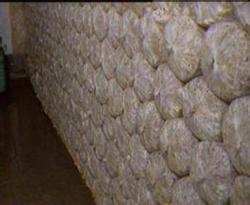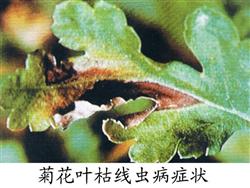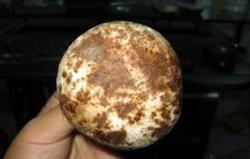Matters needing attention in cultivating Pleurotus ostreatus in Autumn

After the Beginning of Autumn, the cultivation of Pleurotus ostreatus entered a critical period. As the price of cottonseed husk this year is significantly lower than that of the previous two years, many mushroom farmers who use corncob and other Pleurotus ostreatus production began to use cottonseed husk as the main material. Some mushroom farmers have begun to vaccinate, while others are producing tertiary strains to prepare for vaccination a month later. At present, the air relative humidity and ground moisture are relatively large, so there are many problems that should be paid attention to in the cultivation of Pleurotus ostreatus. The reason why the mushroom farmers like to use the cottonseed shell as the main raw material to cultivate edible fungi is that the cottonseed shell contains comprehensive nutrition, strong water absorption, good air permeability and easy to produce mushrooms. The results show that the content of soluble carbohydrate in cotton husk is about 22%, the content of total nitrogen is about 0.67%, and the ratio of carbon to nitrogen is 70 ∶ 1, which is a high quality raw material for cultivating most edible fungi. At the same time, the cottonseed shell particles are moderate, no longer need to crush, pre-wet and other operations, simple and convenient to use, can greatly reduce labor consumption. Mushroom farmers in the selection of cotton seed shell should pay attention to two points: first of all, the selection of cotton seed shell pay attention to increase auxiliary materials, supplement nutrition. Due to the improvement of the stripping equipment, the fluff on the cotton seed shell becomes less and shorter, resulting in lower water absorption capacity and worse air permeability; the damage caused by the cottonseed oil production equipment to the cotton seed shell is reduced, so that the nutrients contained in the cotton seed shell are reduced. Therefore, mushroom farmers must add certain excipients, such as bean cake, wheat bran and so on. Secondly, choose fresh cottonseed shell. Due to the high price of cotton seed shell in the past two years, there are many old cotton seed shells on the market. If it is an old cotton shell, it must be sterilized at high temperature and turned into clinker before Pleurotus ostreatus can be cultivated. But now most mushroom farmers begin to inoculate and cultivate Pleurotus ostreatus after September, and most of them are cultivated with raw materials directly for the convenience of operation. Therefore, it is necessary to remind mushroom farmers that when buying cotton seed shells, it is best to choose fresh cotton seed shells that do not have mildew. Strictly control the ratio of material to water when making tertiary bacteria because plastic bags have good moisturizing performance, it is necessary to strictly master the ratio of material to water when mixing materials with tertiary bacteria. If the water content of the culture material is on the low side, the mycelium growth is slow and weak; if the water content of the culture material is on the high side, the air permeability becomes worse and the mycelium growth is blocked. Generally speaking, the temperature is high in autumn, and the suitable ratio of feed to water is 1 ∶ 1.1 to 1 ∶ 1.2. It can also be measured by the sense that there is water overflowing but not dripping between the fingers of the culture material held in the hand before bagging, and it can be held in a ball and scattered on the ground. Cotton husks with long cotton wool can be properly added with more water, while those with short cotton wool can add less water. When bagging, mix the material while loading and turn the material pile at any time to prevent the dry and wet uneven and affect the mycelium growth. Do a good job in the management of the third-class bacteria during the emergence period, the third-class strains are required to avoid light and dryness, and pay attention to ventilation in the bacteria room, so that the hyphae can be full of culture materials after about a month. Due to the long time of occurrence of tertiary bacteria, if not managed properly, it is easy to cause slow mycelial growth, infection of miscellaneous bacteria, insect pests and other problems, resulting in germ failure. Therefore, it is necessary to strengthen the management of the occurrence period of tertiary bacteria. First of all, check the bacterial bag at the right time and turn the pile to dissipate heat. Due to the limited space in the bacteria room, mushroom farmers are mostly stacked with multi-layer bags, some of which can reach 7 layers. With the continuous growth of hyphae, the internal temperature of the bacteria bag increases, if you do not turn the pile in time to dissipate heat, it is easy to cause burning bacteria. When turning the bag, we should pay attention to the original upward side to the bottom, so that the moisture in the bag is uniform, which is conducive to bacteria. When turning the pile, the bacterial bag must be handled gently, so as not to pierce the bacterial bag and be contaminated by miscellaneous bacteria. When turning the pile, we should pay attention to check the germination and growth of bacteria, if some flaky miscellaneous bacteria are found, we should pick out the miscellaneous bacteria in time and control them; if the occurrence of miscellaneous bacteria in the bacteria bag is serious, we should remove the bacteria bag in time. While inspecting the bacterial bag, you can loosen the mouth of the bag at both ends of the bag by hand to make the oxygen permeate into the bag and speed up the growth of mycelium. After the mycelium grows for a period of time, if it is found that its growth rate becomes slower and oxygen is deficient, you can use tacks to punch holes where the hyphae have grown, and you must not drill holes in places where there is no growing mycelium, otherwise it will lead to bacterial bag pollution. Second, do a good job in pest prevention. Many mushroom farmers report that they are often threatened by pests during the growth period of tertiary bacteria. If the bacterial bag is punctured by hard objects or damaged by rats, mushroom mosquitoes and mushroom flies enter the bag to lay eggs, the hyphae are easily bitten by pests and affect the bacteria. Therefore, during the infection period, the ground, windows and other facilities should be sprayed with cypermethrin, fangchongling, diphacinone and other pesticides every 7 days or so to prevent pests. How to manage the cultivation of Pleurotus ostreatus with clinker in high temperature season in recent years, the number of mushroom farmers using clinker to cultivate Pleurotus ostreatus began to increase, because they saw that the market volume of Pleurotus ostreatus was low and the price was high from August to September. So what problems should mushroom farmers pay attention to when using clinker to cultivate Pleurotus ostreatus? first of all, in steaming disinfection can be fermented before steaming. First fermentation and then steaming can make the culture material reach 100 ℃ quickly, shorten the time of raising the material temperature, and avoid acidification. At the same time, mushroom farmers can use high-temperature plastic baskets and iron baskets to hold mushroom bags instead of nylon bags, and avoid squeezing the bags together to facilitate the flow of steam, quickly raise the temperature of the culture material, and enhance the germicidal effect. This can also ensure the shape of the bacterial bag, which is beneficial to the development of bacteria in the future. Secondly, reasonable ventilation and cooling. Open the vents at the front and top of the shed to make the air convection and lower the temperature of the shed. As Pleurotus ostreatus is an aerobic fungus, mycelial metabolism needs sufficient oxygen, and oxygen supply can be ensured by convection. When ventilating, the plastic film in front of the greenhouse can be lifted about 30 centimeters, and the top vent can be adjusted to the maximum, forming a good convection in the shed. For the ventilation time, when the external air temperature is higher than the shed temperature, there is less ventilation during the day, mainly at night. Thirdly, put the bacterial bag reasonably. In production, single-layer bacterial bags are advocated, but due to the limited space in the greenhouse, most mushroom farmers stack the bags together and put them on the 3rd or 4th floor. In order to dissipate heat from the bacterial bag and prevent burning of bacteria, it can be separated by a bamboo pole in the middle of the bacterial bag. Finally, the top of the shed is shaded and cooled. The installation of grass and non-woven cloth at the top of the shed can not only prevent the direct transfer of heat to the shed, reduce the temperature of the shed, but also provide a weak light environment for mycelium growth.
- Prev

An ingenious trick to insert chrysanthemums in water
Chrysanthemum leaf blight nematode is one of the most important diseases of chrysanthemum. It is distributed all over the world and occurs in Shanghai, Nanjing, Hefei, Guangzhou, Changsha, Kunming, Zhejiang and other places in China. It mainly harms the leaves of chrysanthemum, causing the leaves to turn yellow and fall early. The nematode not only harms chrysanthemum, but also harms chrysanthemum, golden chrysanthemum, dahlia,.
- Next

Cultivation of Pleurotus ostreatus: strict control of seed production
The rust or dark brown spots on the cap and stalk of Pleurotus ostreatus are called Pleurotus ostreatus rust spot. This disease is a kind of bacterial disease which is easy to occur in the growth stage of Pleurotus ostreatus fruit body. The pathogen causing the disease is Pseudomonas aeruginosa, which is widely distributed in nature. At the beginning of the disease, the disease spot is only needle-like size, color.
Related
- Fuxing push coffee new agricultural production and marketing class: lack of small-scale processing plants
- Jujube rice field leisure farm deep ploughing Yilan for five years to create a space for organic food and play
- Nongyu Farm-A trial of organic papaya for brave women with advanced technology
- Four points for attention in the prevention and control of diseases and insect pests of edible fungi
- How to add nutrient solution to Edible Fungi
- Is there any good way to control edible fungus mites?
- Open Inoculation Technology of Edible Fungi
- Is there any clever way to use fertilizer for edible fungus in winter?
- What agents are used to kill the pathogens of edible fungi in the mushroom shed?
- Rapid drying of Edible Fungi

